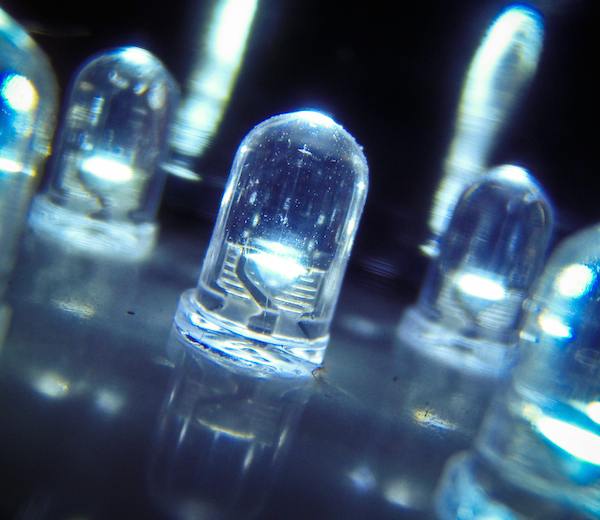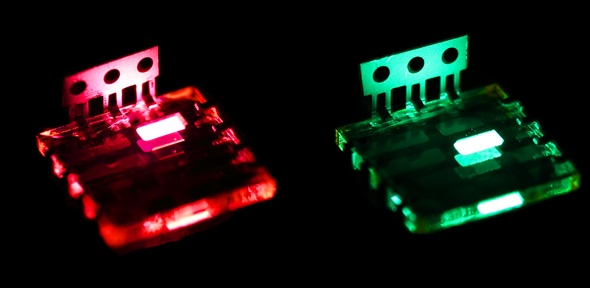
[Image above] Will perovskites muscle silicon out of the way when it comes to LED lights, too? Credit: Mike Deal; Flickr CC BY-ND 2.0
Perovskites have enjoyed some storied success over the past couple of years—solar cells containing the materials (more on that here) are now at almost 20 percent efficiency, although silicon solar cells required 10 times that many research years to reach a similar efficiency (more on some of that here).
Now, perovskites may also be showing their superiority complex over silicon when it comes to LEDs, too. Researchers from the University of Cambridge, University of Oxford, and Ludwig-Maximilians-Universitat in Munich have figured out a way to use organometal halide pervoskites to make high-brightness LEDs. The research is published in Nature Nanotechnology.
“These organometal halide perovskites are remarkable semiconductors,” Zhi-Kuang Tan, lead author and graduate student at Cambridge’s Cavendish Laboratory, says in a university press release. “We have designed the diode structure to confine electrical charges into a very thin layer of the perovskite, which sets up conditions for the electron-hole capture process to produce light emission.”
To make the thin layer, researchers dissolved the perovskites in solvent and spin-coated the solution onto a substrate, and, upon drying, the pervoskites take it upon themselves to form nice little ordered crystals. In other words, they worked smarter, not harder.
In comparison to the conventional manufacture of LEDs, the new perovskite LEDs don’t need high-temperature heating or a high vacuum, so the manufacture is more simple and inexpensive. Plus, it’s no longer cost-prohibitive for projects like large-area displays.
“The big surprise to the semiconductor community is to find that such simple process methods still produce very clean semiconductor properties, without the need for the complex purification procedures required for traditional semiconductors such as silicon,” says professor Sir Richard Friend, who led the Cambridge program.
In addition to simple and cheap (both pluses in manufacturers’ book), the LEDs are also versatile. “It’s remarkable that this material can be easily tuned to emit light in a variety of colors, which makes it extremely useful for color displays, lighting and optical communication applications,” Tan says. “This technology could provide a lot of value to the ever growing flat-panel display industry.”
The paper is “Bright light-emitting diodes based on organometal halide perovskite” (DOI: 10.1038/nnano.2014.149).

